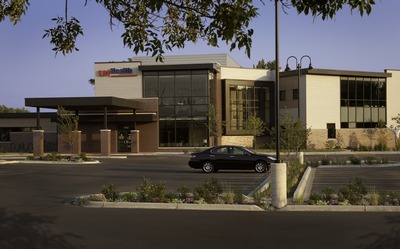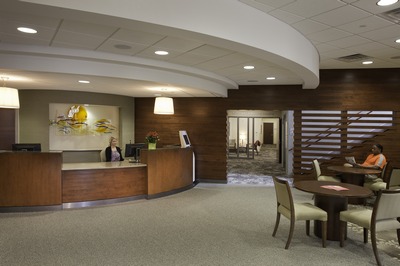UW Health Yahara Clinic Receives LEED Certification
 MONONA, Wis. – The UW Health Yahara Clinic in Monona, Wis. has become LEED certified for sustainable design and construction.
MONONA, Wis. – The UW Health Yahara Clinic in Monona, Wis. has become LEED certified for sustainable design and construction.
“Healthcare facilities are particularly challenging when it comes to sustainable design, given their stringent operating requirements and inherently high demands for energy and water,” Tendler said.
A team from Kahler Slater’s Milwaukee office were the architects and interior designers on the project. J.H. Findorff & Son Inc.’s Madison office was the general contractor. Livesey Company of Madison was the developer.
Opened in October 2011, the 32,656-square-foot facility offers family medicine, laboratory, X-ray, mammography and physical therapy services, as well as health and nutrition education and group classes. The clinic is operated by the University of Wisconsin Medical Foundation, one of the largest multi-specialty medical groups in Wisconsin and the nation.
In implementing sustainable practices, the clinic has reduced its potable water use by 37 percent, reduced its annual energy costs by 14.7 percent and helped maintain healthy indoor air quality.
Sustainable Features and Practices:
- Maintain healthy indoor air quality with green-cleaning practices; i.e., low emittance of VOCs (which earned the project “Innovation Points” during the LEED-certification process.
- Access to natural light.
- Preservation and protection of the adjoining natural wetlands through a detention pond.
- Landscaping emphasizes native plants that thrive without irrigation. Exterior light fixtures keep light focused downward – promoting safety for patients and staff and preventing the “skyglow” light pollution that can be harmful to wildlife.
- Overhead interior lights automatically dim on bright days. Task lighting in individual work areas allows employees to customize lighting to their needs and preferences.
- Pressure-assisted toilets reduce water consumption.
- 30.3 percent of the total building materials content (based on value) was manufactured using recycled materials. This includes steel framing, concrete, drywall, carpeting, asphalt and fiber cement siding.
- 70 percent – or 86.35 tons – of on-site generated construction waste was diverted from landfills. This included drywall, asphalt and steel.
- 28.04 percent of building materials used (based on value) were manufactured or extracted within 500 miles of the building site.
Posted December 19, 2012
More Articles:
- Coverings 2024
Apr 22, 2024 – Apr 25, 2024 - Hospital, Outpatient Facilities & Medical Office Buildings Summit
Apr 25, 2024 – Apr 25, 2024 - CxA Workshop & Exam
Apr 29, 2024 – Apr 30, 2024 - EMP Seminar & Exam at CxEnergy 2024
Apr 29, 2024 – Apr 30, 2024 - CxEnergy
Apr 29, 2024 – May 2, 2024 - PHCC West 2024
Apr 29, 2024 – May 2, 2024 - Lean in Design Forum 2024
May 1, 2024 – May 2, 2024










